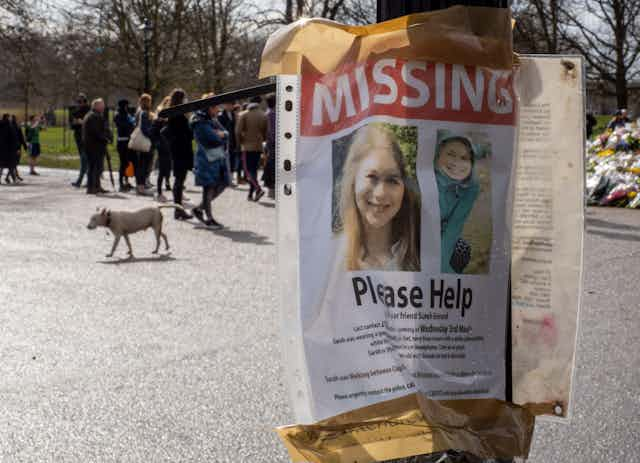The murder of Sarah Everard has damaged public trust in the police, and has women in the UK seeking answers about their safety in public places.
A new government strategy continues to place the burden on women and girls to keep themselves safe, rather than addressing the causes of their lack of safety.
The strategy introduces a number of campaigns and proposals aimed at reducing violence against women and girls, supporting victims and pursuing perpetrators. These include appointing a top police officer to lead efforts to tackle violence against women, improving data collection on these crimes, investing £5 million into a “Safety of Women at Night” fund and £27 million to recruit more advisers to support victims.
One announcement in the strategy is the pilot of an online tool called “StreetSafe”, which invites users to log locations on a map if they’ve felt unsafe in that area.
The government also places a focus on safety on public transport, appointing a “transport champion” dedicated to this issue. In addition to this, the strategy supports the (theoretical) launch of “demand responsive” transport services that would bring people closer to their homes than regular buses. Concrete details on this particular personalised bus service are not provided.
Compiling information about women’s safety on the ground and providing “safer” ways to get home might seem like a welcome alternative to recent police advice for women to “stay home and be vigilant”, but there are several problems with this approach.
Digital tools such as StreetSafe reproduce victim-blaming narratives which burden women with the responsibility to keep safe. They reinforce the idea that surveillance of women’s behaviour is the key to preventing crimes. Door-to-door transportation services could even reveal where a woman lives, making her more unsafe and vulnerable to stalking or harassment.
The Everard case is a clear example of why women might not feel able to trust people in authority with information about their locations and transport habits, whether the strategy guarantees anonymity or not. Wayne Couzens was a police officer who abused his position of power to commit murder. The government strategy provides no consideration of the potentially dire consequences of data breaches, which could be open to abuse by those with privileged access to information.
In the case of StreetSafe, someone with access to information about the locations marked as unsafe could deduce the locations where potential victims feel safe – and then seek out those locations to commit crimes.
‘Feeling safe’
As well as being potentially dangerous, these suggestions do not actually improve safety. Rather, they focus on promoting a “feeling” of safety. The goal of the StreetSafe app and other proposals is, in the words of the strategy, “to ensure women and girls feel safe”. Far from grappling with the cultural and societal complexities of sexual violence, the government has focused instead on women’s behaviour, which could lead to blaming women for crimes committed against them.
In our research on the narrative of women as victims, we’ve found that this framing of safety as an emotional issue, rather than a material one, has undermined the response to women’s sexual victimisation. Dismissal, downplaying and devaluing of women’s accounts of violence, particularly when the experiences are framed as an emotional issue, is one reason women do not speak out about violence and sexual harassment, and why they are often not taken seriously when they do.
One review of research evidence suggests that women often report that being dismissed as overly sensitive and emotional is a key reason they don’t report or even label their experiences as sexual violence or harassment.

Policing women will not address those who commit violence or the societal power relations than enable them. Women know this, research tells us this, and a new government strategy – particularly one published after such a high-profile and devastating murder – should have reflected this.
Instead, most measures have not actually been changed from previous years. The policy continues to expect women to keep themselves safe, while proposing to funnel money (and not very much) into new methods of “keeping safe”.
These criticisms are not new. The Reclaim the Night movement originated from women’s resistance against curfews imposed on them in light of violent acts by men. Similar protests erupted in the aftermath of Everard’s death.
How many more times do women have to take these measures, and how many more women will be killed, before the focus is turned on those who do violence and factors that make their violence possible?

